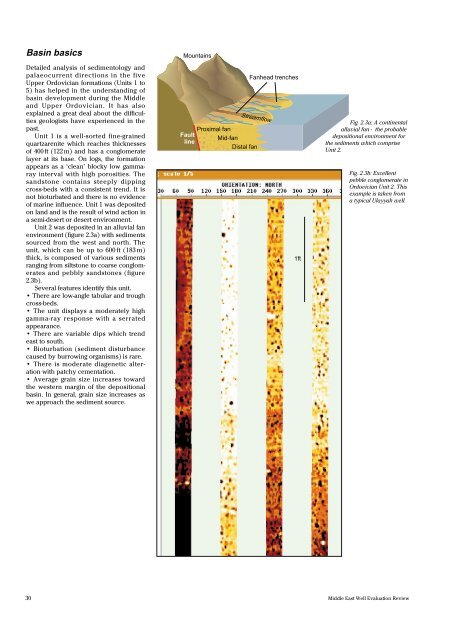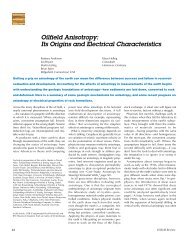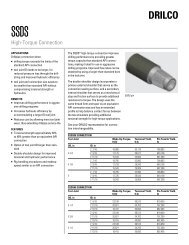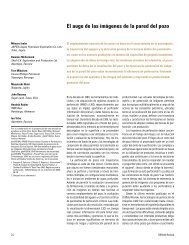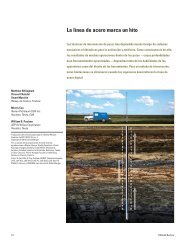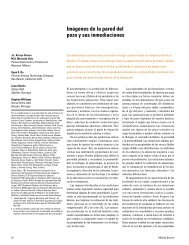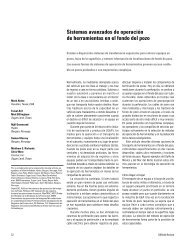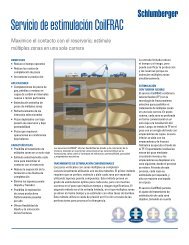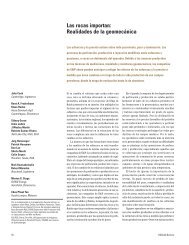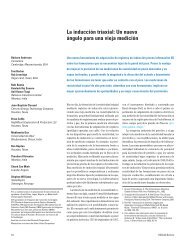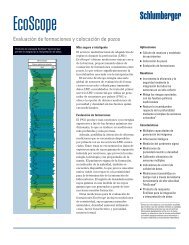Saudi Sandstone Correlations
Saudi Sandstone Correlations
Saudi Sandstone Correlations
You also want an ePaper? Increase the reach of your titles
YUMPU automatically turns print PDFs into web optimized ePapers that Google loves.
Basin basics<br />
Detailed analysis of sedimentology and<br />
palaeocurrent directions in the five<br />
Upper Ordovician formations (Units 1 to<br />
5) has helped in the understanding of<br />
basin development during the Middle<br />
and Upper Ordovician. It has also<br />
explained a great deal about the difficulties<br />
geologists have experienced in the<br />
past.<br />
Unit 1 is a well-sorted fine-grained<br />
quartzarenite which reaches thicknesses<br />
of 400 ft (122 m) and has a conglomerate<br />
layer at its base. On logs, the formation<br />
appears as a ‘clean’ blocky low gammaray<br />
interval with high porosities. The<br />
sandstone contains steeply dipping<br />
cross-beds with a consistent trend. It is<br />
not bioturbated and there is no evidence<br />
of marine influence. Unit 1 was deposited<br />
on land and is the result of wind action in<br />
a semi-desert or desert environment.<br />
Unit 2 was deposited in an alluvial fan<br />
environment (figure 2.3a) with sediments<br />
sourced from the west and north. The<br />
unit, which can be up to 600 ft (183 m)<br />
thick, is composed of various sediments<br />
ranging from siltstone to coarse conglomerates<br />
and pebbly sandstones (figure<br />
2.3b).<br />
Several features identify this unit.<br />
• There are low-angle tabular and trough<br />
cross-beds.<br />
• The unit displays a moderately high<br />
gamma-ray response with a serrated<br />
appearance.<br />
• There are variable dips which trend<br />
east to south.<br />
• Bioturbation (sediment disturbance<br />
caused by burrowing organisms) is rare.<br />
• There is moderate diagenetic alteration<br />
with patchy cementation.<br />
• Average grain size increases toward<br />
the western margin of the depositional<br />
basin. In general, grain size increases as<br />
we approach the sediment source.<br />
Mountains<br />
Fault<br />
line<br />
Fanhead trenches<br />
Streamflow<br />
Proximal fan<br />
Mid-fan<br />
Distal fan<br />
Fig. 2.3a: A continental<br />
alluvial fan - the probable<br />
depositional environment for<br />
the sediments which comprise<br />
Unit 2.<br />
30 Middle East Well Evaluation Review<br />
1ft<br />
Fig. 2.3b: Excellent<br />
pebble conglomerate in<br />
Ordovician Unit 2. This<br />
example is taken from<br />
a typical Ulayyah well.


